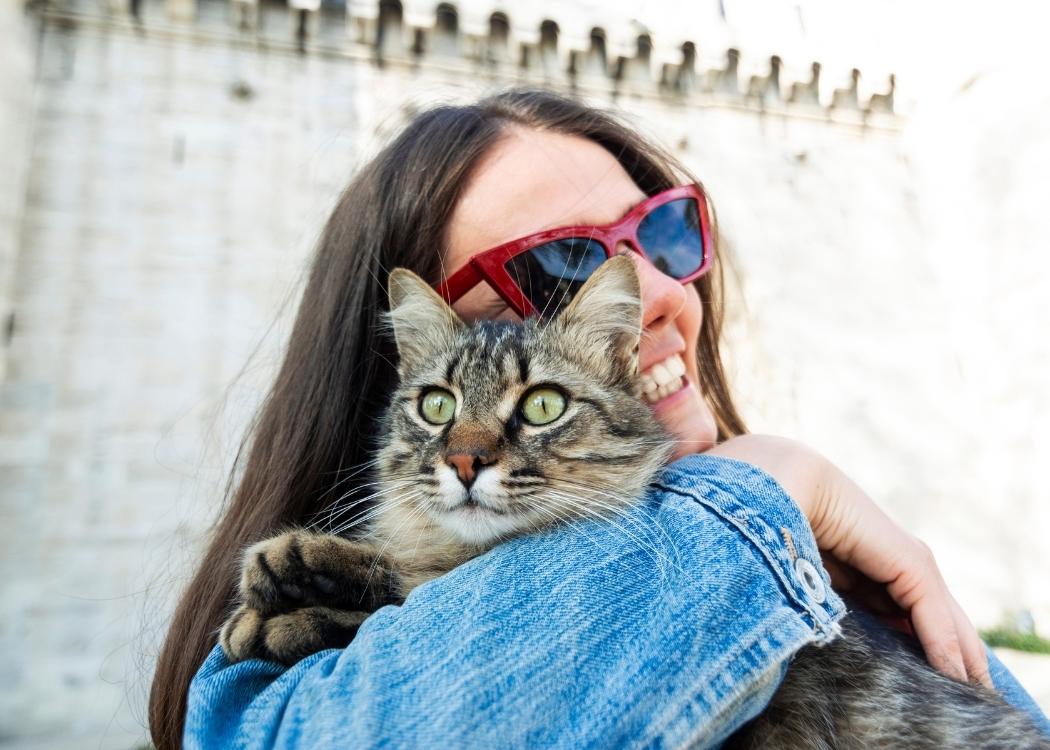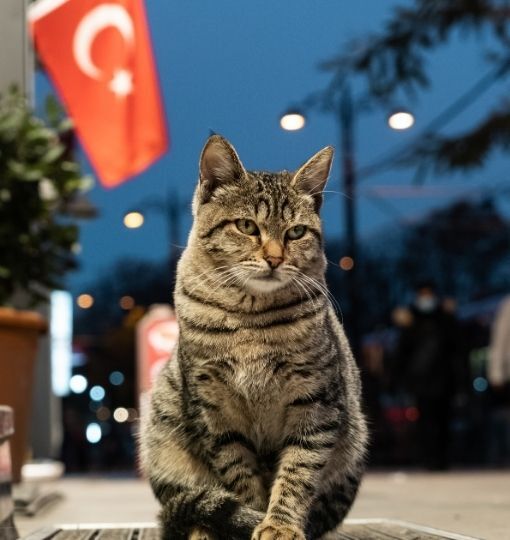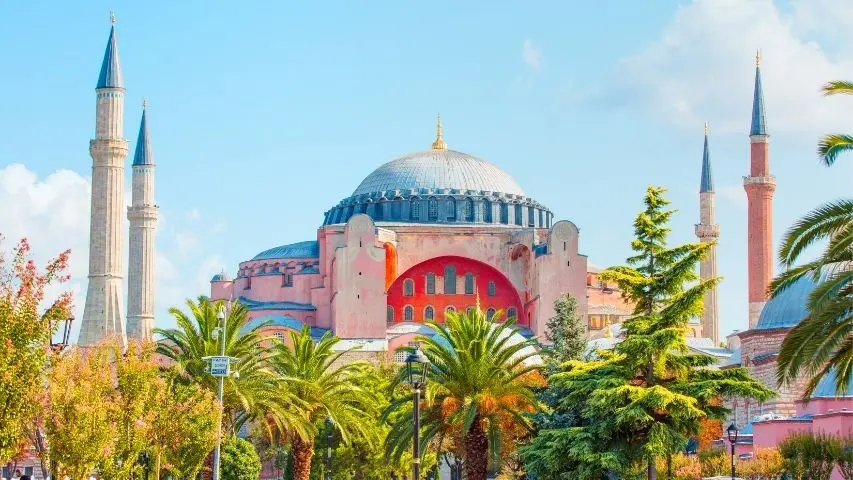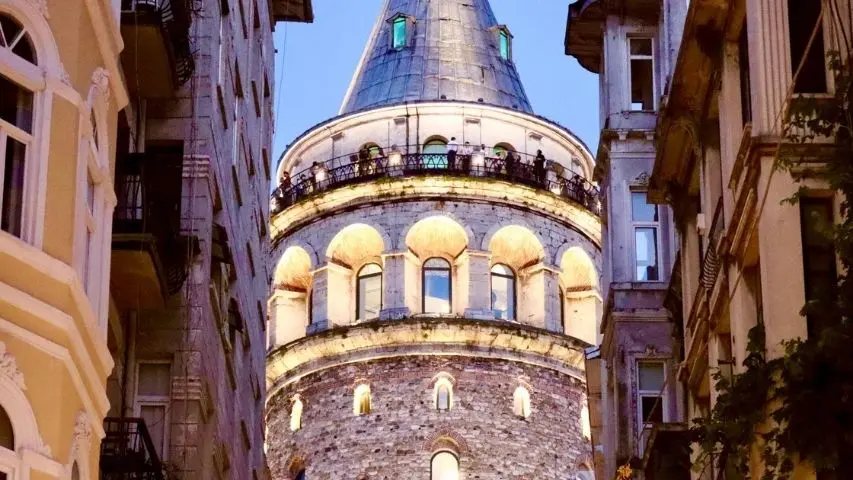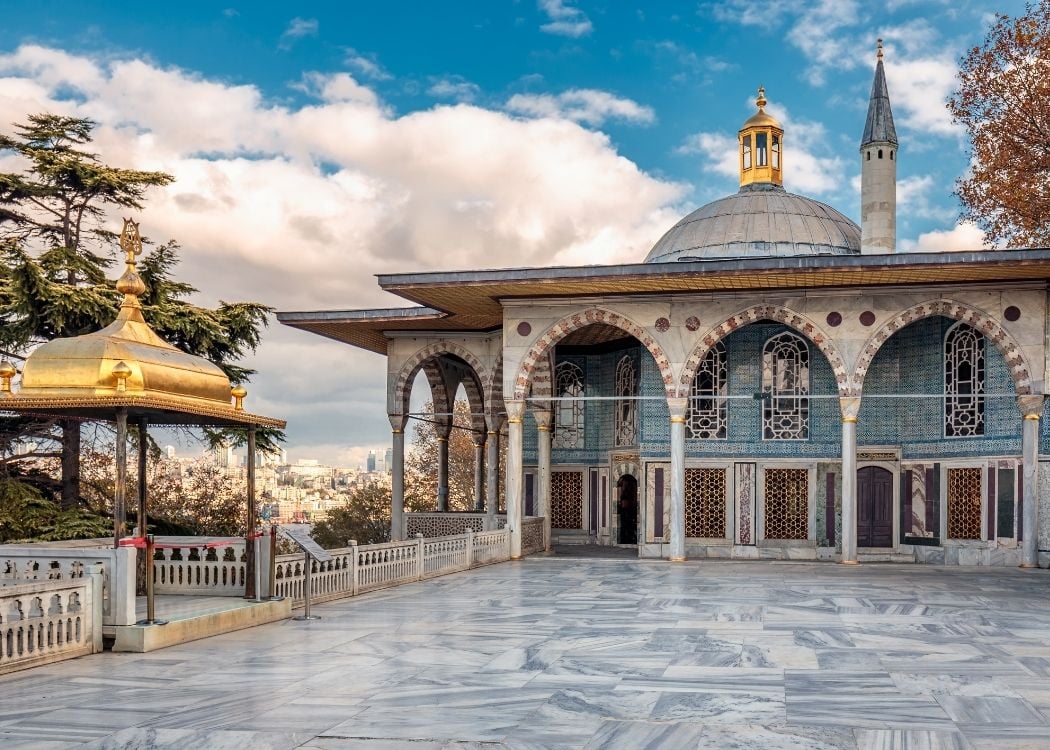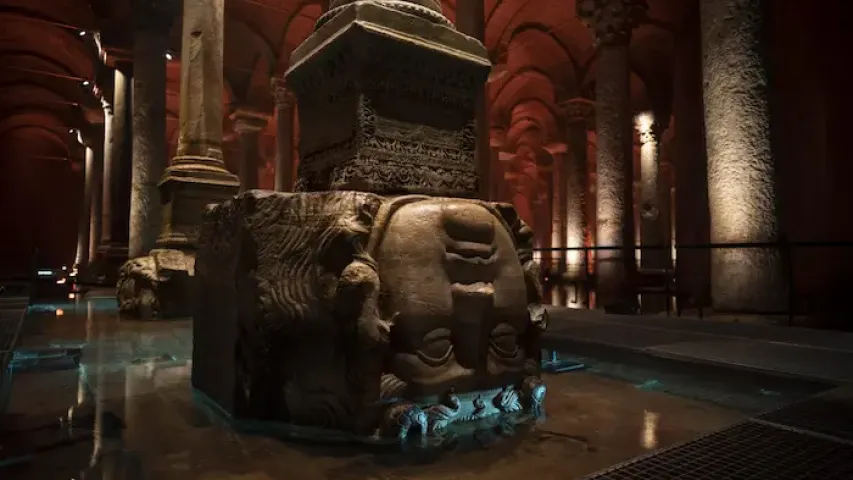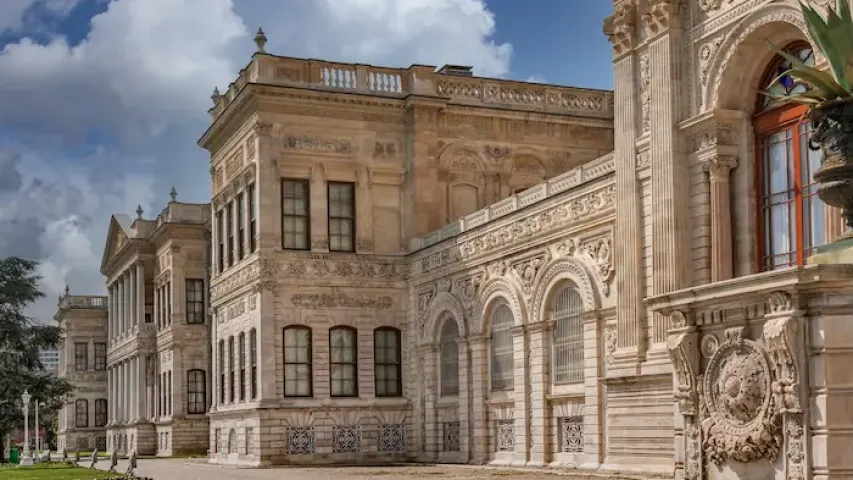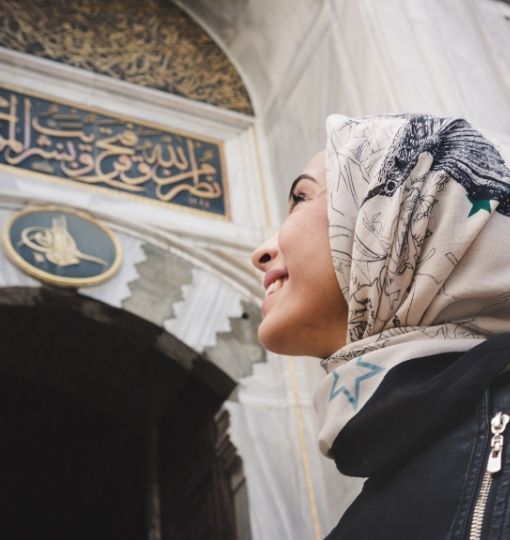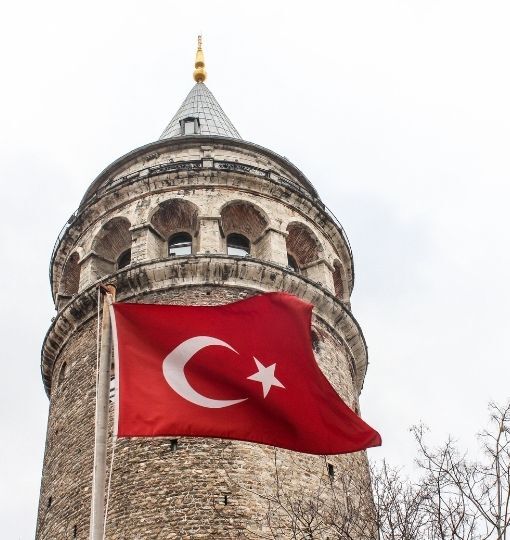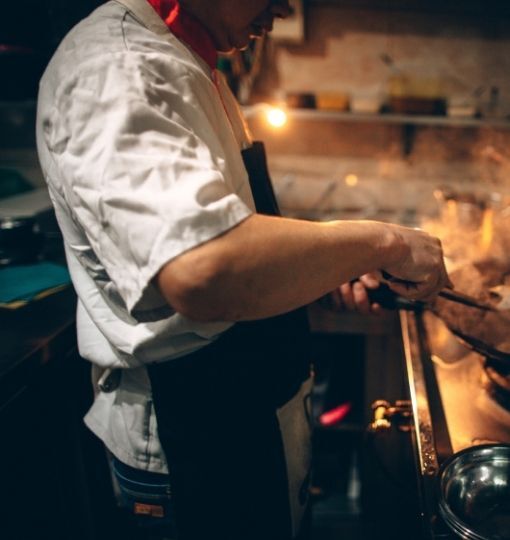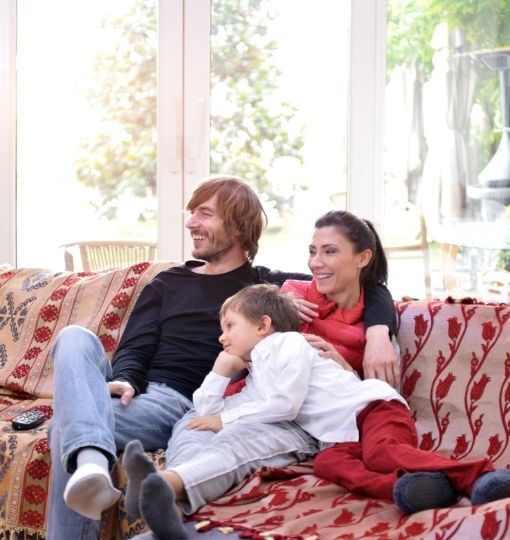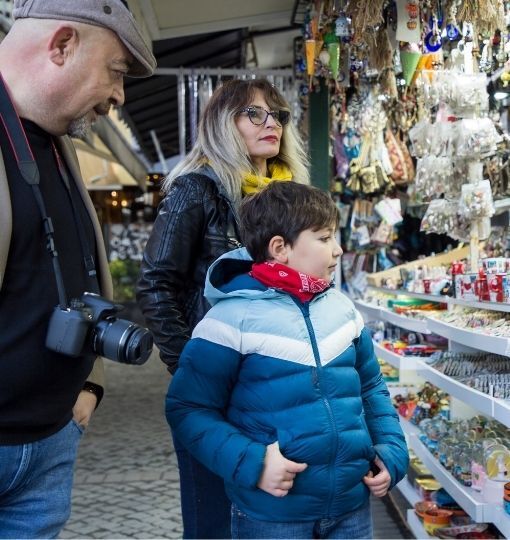In the enchanting streets of Istanbul, there exists a unique tapestry of life where centuries-old traditions and modern-day delights converge. Istanbul, often endearingly called "Catstanbul," is home to a population of cats that have roamed these historic streets for generations. As these feline residents gracefully weave their way into the hearts of locals and visitors alike, they embody the spirit of Istanbul - a city where history and contemporary pleasures harmoniously coexist. Just as the city's cats are an integral part of its identity, so too is the Istanbul Tourist Pass®, a digital key to unlocking the rich tapestry of experiences, attractions, and stories this city has to offer.
The Istanbul Tourist Pass® is more than just a pass; it's a journey into the soul of Istanbul. With this digital card in hand, travelers are granted access to over 100 captivating attractions and services that span the city's vibrant past and its modern-day wonders. Much like the cats that roam freely and protect the city's heritage, the Istanbul Tourist Pass® is a guardian of Istanbul's culture, offering insights into its rich history and facilitating exploration of its contemporary treasures. Join us as we delve into the intriguing world of both Istanbul's street cats and the Istanbul Tourist Pass®, and discover the hidden stories that make this city so enchanting. Buy your Pass now!
Istanbul's Beloved Feline Residents
Millions of stray cats wander the streets of Turkey and have been doing it for millenniums. You'll see them occupying the best spots in restaurants and cafes and enjoying the sunny weather in parks. You'll see them basically everywhere you go. How do humans feel about this? There is a unique friendship between people in Turkey and cats. It's quite common to see people feeding stray cats, nursing them when needed, and caring for their wellbeing.
Cats of Istanbul
Istanbulites share the streets of the city with approximately 125,000 cats. Moreover, these are just stray cats alone; when house cats are included, it is estimated that an average of 200,000 cats live in this city. Cats are known to enjoy a very comfortable life in this city.
Guardians of Tradition
So, why is Turkey home to millions of cats? There might be a few explanations. The first one is that stray cats help protect major cities in Turkey from rats. This theory dates back to the Ottoman Empire when many wooden houses were invaded by mice and other nasty pests. Cats were there to protect the food supplies and defend these wooden houses.
Preserving Culture
It is also believed that stray cats in Turkey protect culture. Before printing machines came to the country, our four-legged friends were there to protect rare books and important paper documents from mice!
Sailors and Cats
There is also another explanation for why there are so many cats in Turkey. Since Istanbul is a major port city with hundreds of ships, sailors needed to protect their food from rodents. The best way to protect the food was to have a cat, maybe two, or maybe 10 of them on the boat. When ashore, a few cats would go out to explore the city and never come back.
The quantity of cats in Istanbul is not just a quirk of fate but a deliberate collaboration between humans and felines. These cats, whether strays or cherished house pets have become an integral part of Istanbul's charm, safeguarding its heritage and adding a unique layer to the city's cultural tapestry.
Historical Significance of Cats in Istanbul and Turkey
Countless stray cats meander through the streets of Turkey, a practice that has endured for centuries. These feline inhabitants often claim prime real estate in restaurants and cafes, relishing the warmth of the sun in parks and virtually any location you can think of. But what's truly remarkable is the deep bond between the people of Turkey and these wandering cats. It's a common sight to witness individuals generously providing food, tending to their needs, and ensuring their welfare, reflecting a unique and heartwarming friendship that defines the connection between the Turkish people and their feline companions. Let’s have a look at their historical importance for this city and the country.
Cats in Ottoman Times
The historical roots of cats in Istanbul can be traced back to the Ottoman Empire. During this period, the vast majority of Istanbul's houses were constructed from wood, providing shelter for mice and rats. This abundance of rodents made the presence of cats a necessity in the city. These feline residents became guardians of households, protecting precious food stores and invaluable documents from the scourge of pests.
Cultural Guardians
Cats have not only safeguarded physical possessions but also cultural treasures. Long before the advent of modern printing technology, cats played a crucial role in protecting rare books and important paper documents from the destructive tendencies of rodents. Their silent watch over these cultural artifacts helped preserve Turkey's historical heritage.
Maritime Companions
In Istanbul, a bustling port city with a rich maritime history, cats found a unique role as companions to sailors. Ships, teeming with valuable cargo, were vulnerable to rodent infestations. Sailors welcomed cats on board to protect their provisions. When these ships docked in Istanbul, a few feline crew members would disembark and make the city their home.
The historical importance of cats in Istanbul and Turkey goes far beyond the roles they played in everyday life. These feline residents are intricately woven into the fabric of the city's heritage, serving as protectors of homes, culture, and even the goods brought by ships from distant lands. Their historical significance is a testament to the enduring relationship between cats and the people of Istanbul, where these furry companions are cherished as both guardians and symbols of tradition.
The Beloved Cats of Hagia Sophia: Gli and Her Companions
Hagia Sophia, with its rich history and architectural splendor, has been home to not only historic relics but also to a special feline resident named Gli. Gli, a Turkish European Shorthair cat, was a beloved figure in Istanbul, known for her charming presence in Hagia Sophia. Born in 2004, Gli spent her entire life at this iconic site. She gained international recognition when Hagia Sophia was re-opened for worship in 2020.
An Internet Celebrity
Gli's fame transcended borders, making her an internet sensation and capturing the hearts of visiting tourists. Her gentle demeanor and the historical backdrop of Hagia Sophia added to her appeal. Gli's popularity was such that she had her own dedicated Instagram account, @hagiasophiacat, with over 118,000 followers at the time of her passing.
Life at Hagia Sophia
Gli was born to a cat named Sofya in the year 2004 and had two siblings, Pati and Kizim. Throughout her life, Gli had only one kitten, a beautiful jet-black cat named Karakiz. Gli's presence at Hagia Sophia endeared her to the many tourists who frequented the historic site when it was a museum. Her fame received a notable boost when both Barack Obama and Recep Tayyip Erdoğan had the honor of meeting and petting her during their visits.
Gli's Legacy
The transition of Hagia Sophia from a museum to a place of worship in 2020 brought Gli back into the spotlight. News of this transition also shone a light on her fate, prompting a statement from Presidential spokesman İbrahim Kalın: "That cat has become very famous, and there are others who haven’t become that famous yet. That cat will be there, and all cats are welcome to our mosques."
Gli's Farewell
Gli passed away in 2020, following a period of medical care at a veterinary clinic in Levent, Istanbul. Her memory lives on, as she was laid to rest in the garden of Hagia Sophia, the place where she became an inseparable part of its history and heart.
The story of Gli and the cats of Hagia Sophia is a testament to the enduring bond between humans and felines, even in the midst of historical and cultural transformations.
Cats in Islam: Admiration and Cultural Significance
In the eyes of Muslims, the domestic cat is regarded as "the quintessential pet." They hold a special place in Islamic culture and are admired for their cleanliness, both in appearance and behavior.
Historical Treasures
The historical connection between cats and Islamic societies is rich and unique. One striking example is the Syrian hospital that astonished the American poet Bayard Taylor in the 19th century. At this institution, cats were allowed to roam freely, sheltered, nourished, and cared for through waqf, which covered caretakers' wages, veterinary care, and cat food. In contrast, during the same era in Europe, cats were often viewed quite differently—either consumed as food or exterminated under papal decrees.
Protectors of Knowledge
Cats have been valued for their role in safeguarding granaries and food stores from pests. However, their significance extends further as they played a crucial role in preserving the written word in paper-based Arab-Islamic cultures. They were known for preying on mice and preventing the destruction of books, and for this reason, they are often depicted in paintings alongside Islamic scholars and bibliophiles.
Hygiene and Ritual Cleanliness
In Islamic tradition, cats are celebrated for their cleanliness and are considered ritually clean. This recognition allows them to enter homes and even mosques, including the esteemed Masjid al-Haram. Food sampled by cats is considered halal, meaning their consumption does not render it impermissible for Muslims to eat. Additionally, water from which cats have drunk is permitted for wudu, the ritual ablution performed by Muslims before prayer.
The Tale of Muezza
A beloved story in Islamic tradition tells of Muezza, who is believed to be the favorite cat of the Prophet Muhammad. According to the story, when Muhammad prepared for prayer, he found his cat Muezza peacefully resting on the sleeve of his prayer robe. Rather than disturbing her, he gently cut off the sleeve, allowing the cat to remain undisturbed. This compassionate act, where he stroked Muezza three times, is said to have bestowed upon all cats the ability to land on their feet. While this story isn't found in the hadith or supplementary works, it endures as a cherished part of Islamic lore.
Muslim Scholars' Views
The views of Muslim scholars on neutering animals, including cats, are divided. However, many agree that neutering is permissible if it benefits the cat and doesn't harm it. This approach reflects a respect for the sanctity of life.
Cats, in the context of Islam, exemplify a harmonious relationship between humans and animals, celebrated for their unique qualities and contribution to both daily life and culture.
Respectful Ways to Avoid Cats in Istanbul
While cats are cherished residents of Istanbul, we understand that not everyone may share the same affection for these furry companions. Some people may have allergies or even phobias related to cats. If that's the case for you, here are some considerate ways to navigate your Istanbul adventure:
Choose Cat-Friendly Spots: When selecting places to dine or relax, opt for cat-free environments. Many cafes and restaurants in Istanbul are accommodating to various preferences.
Keep Your Distance: If you encounter a cat during your exploration, it's perfectly fine to admire them from a distance. Most cats are quite independent and won't seek interaction unless invited.
Cat-Free Accommodations: When booking accommodations, consider options that are less likely to have resident cats. Many hotels and guesthouses in Istanbul cater to different guest preferences.
Carry Allergy Medication: If you have cat allergies, be sure to carry any necessary allergy medication with you during your visit, just in case.
Communicate Your Needs: If you're traveling with a group or on a guided tour, communicate your preferences to the organizers so they can make suitable arrangements.
Plan Outdoor Activities: Explore the city's outdoor attractions, like parks and historical sites, where you're less likely to encounter cats indoors.
Remember, Istanbul is a city that welcomes all kinds of visitors, and there are ways to enjoy your stay while being mindful of individual preferences and needs. Whether you're a cat lover or prefer to keep your distance, there's a place for everyone in this vibrant city.
Discover Istanbul's Charms with a Friend
As you explore Istanbul, you're in for a treat. The Istanbul Tourist Pass® is your ticket to all the exciting places and activities. It's like a special key that unlocks the city's wonders. While you're out and about, you'll meet some friendly local cats. They're a part of the city too, and they make your visit even more special.
With the Istanbul Tourist Pass®, you can visit cool places, take guided tours, and enjoy the city's culture. So, when you're exploring Istanbul, don't forget to say hello to the cats you'll meet along the way. Your pass lets you have lots of fun in Istanbul. So, go explore, make memories, and don't forget to give a little wave to the cats that make this city even more charming. Buy your Pass Now!

